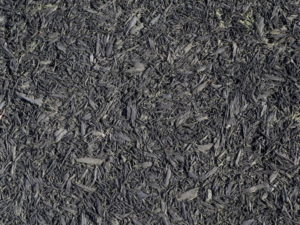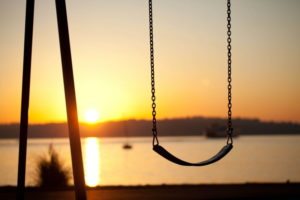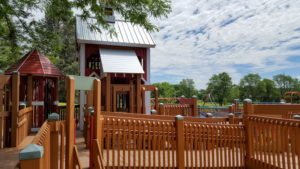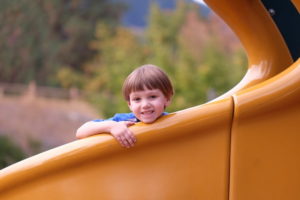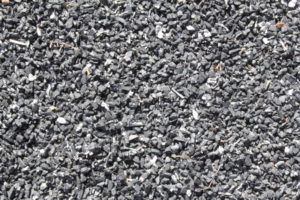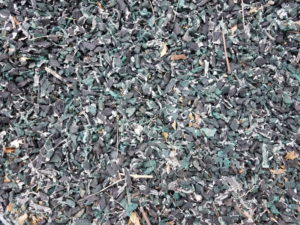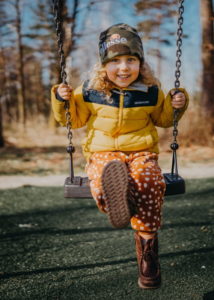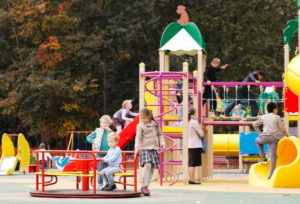When you’re evaluating surface options like synthetic turf or artificial grass for a playground or play area, there’s a lot to consider. You want something robust to withstand heavy use yet safe and accessible to accommodate everyone at play. We’ve compiled a comprehensive overview of using playground surfacing similar to AstroTurf® or fake grass for playgrounds, weighing all the critical factors. While we may be biased about poured-in-place surfacing, we still think you should closely examine all your options before you make a purchase for your organization or business.
Is Artificial Grass or Synthetic Turf the Best Option for Playground Flooring?

Synthetic turf or artificial grass is constructed of synthetic, grass-like fibers or yarn (some call it an outdoor playground carpet). It is manufactured to look and feel like a natural grass playground surface, but without all of the maintenance. Used on sports fields for years, synthetic turf is becoming a more common occurrence on the playground. The fibers are often polypropylene or polyethylene and consist of multiple layers, a backing, cushioning, drainage layers, and infill, usually composed of recycled rubber tires or natural cork. Certain playground grass is made of recycled materials, but some are not, so be sure to do your research.
- Safety of Artificial Grass
- Cost of Artificial Grass
- Accessibility of Artificial Grass
- Appearance & Outdoor/Indoor Use of Artificial Grass
- Quality of Artificial Grass
- Installation of Artificial Grass
Safety of Synthetic Turf Playground Flooring
Pros:

- The top factor for a playground surface is the level of fall protection it achieves. When installed with the proper padding and infill, synthetic turf meets the American Standard Testing Methods (ASTM) standards and can provide excellent shock absorption.
- Artificial turf with a thickness of 2.1-3.1″ achieves a fall height safety factor of five feet, whereas a thickness of 3.3-4.3″ achieves a height of seven-feet, recommended for most residential and commercial playgrounds.
Cons:
- Certain types of artificial turf may not absorb falls from as high as poured-in-place surfacing.
- Synthetic turf may need additional padding or underlayment to keep kids safe and achieve the proper fall-height rating.
- It’s essential to confirm the specific product’s details to ensure it is safe.
Cost of Synthetic Turf as a Playground Surface
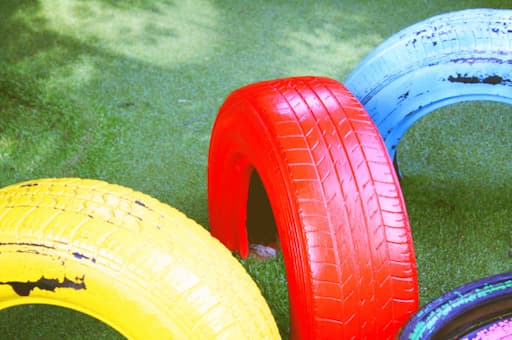
Pros:
- The lifetime cost of artificial turf as a material itself is relatively low. After three to five years, the costs associated with maintaining natural grass and soil exceed the installation’s high price.
- Using synthetic grass in a building project can accumulate LEED points for various reasons: water efficiency, recycled or recovered materials used, low emission materials used, and the material composition of the turf itself.
Cons:
- Overall, synthetic turf is very costly to install. Not only do you have to pay for the turf itself, but the ground prep, irrigation needs, and more.
- Depending on the manufacturer, prices for artificial grass vary from $6 to $20 per square foot before installation. Installation costs can vary between companies, adding onto the cost.
- It’s relatively uncommon, but any damage to artificial grass can be cut out and replaced with a new piece, averaging about $12 per square foot (not including installation).
- A fresh new patch often sticks out as the majority of synthetic grass will look slightly worn.
Accessibility of Synthetic Turf Flooring
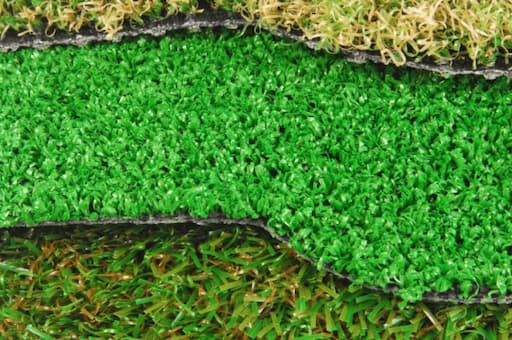
Pros:
- As long as the artificial grass is firm and a wheelchair can move around it with ease, you can use synthetic grass for accessible playgrounds and ADA compliance.
- Synthetic turf is also perfect for people suffering from hay fever or other allergies, thanks to its zero-pollen count.
Cons:
- Synthetic turf surfaces are not immune from bacteria, which cause foul odors and sanitary problems. However, some manufacturers have developed antimicrobial additives built straight into the product or sprays to inhibit bacteria’s growth.
- Also, if not installed properly, the rolls of artificial grass can create seams in them, adding a tripping hazard.
Appearance and Indoor/Outdoor Use of Synthetic Turf Playground Flooring

Pros:
- When considering artificial turf for your playground area, you can choose various colors, styles, densities, and heights or aim for the most natural appearance and texture.
- You can also use it both indoors and outdoors.
- The biggest bonus about synthetic turf is the natural look and feel it brings to your playground. This “grass” always stays green.
Cons:
- The loose rubber granules that are in the artificial grass can be quite annoying, as they tend to get stuck on clothing, skin, in shoes, etc. They can easily be dragged into the school building (or your house) and be messy to clean up. A benefit of using poured rubber for playgrounds is that there is no loose material.
- Unfortunately, you can’t easily stencil games, shapes, logos, or other graphics into your synthetic turf. If that’s a deal-breaker, we know where you can find surfacing with limitless design options.
Quality & Maintenance of Synthetic Turf as a Playground Surface
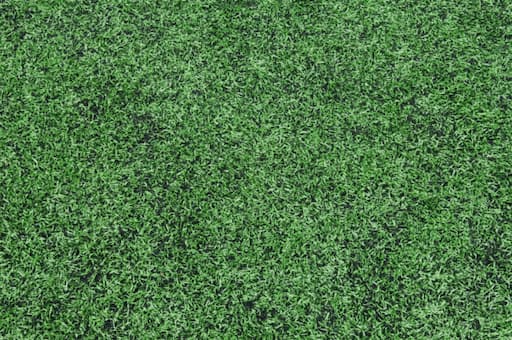
Pros:
- If you compare synthetic turf to real grass, you’ll find it’s much more low maintenance. No watering, mowing, harmful pesticides, or fertilizer is required.
- It will need an occasional rinse-off, but water drains well off its surface.
- Playground turf maintains a higher face weight, the amount of material used by the square yard, making it quite durable and able to withstand significant wear and tear.
- If it does need a repair, luckily, you won’t need to replace the entire turf. Cut out the damage and replace it with new turf.
- Plus, say goodbye to mud and grass stains.
- Synthetic turf is UV stable and won’t fade in the sunlight. It is also heat and frost resistant.
- Creepy-crawlies will be a thing of the past as insects often steer clear of artificial grass.
Cons:
- When it comes to maintenance, synthetic turf is a bit needier than poured-in-place surfacing.
- The faux turf requires frequent cleaning, especially if you live in an incredibly dusty locale.
- Dust, sand, and leaves will accumulate in the fibers, but you can remove them with a blower, rake, broom with stiff bristles, or a garden hose.
- When the heat rises, so does the temperature of your synthetic playground turf. While there are additional fills to keep temperatures down, artificial grass is generally much hotter to touch than real grass.
- Also, static electricity may build on the synthetic turf, and the surfaces may need an anti-static solution.
- No certified manufacturer guarantees artificial grass to last more than eight years. However, it usually endures about 10-15 years, meaning you’ll have to replace it sooner rather than later.
Installation of Synthetic Turf Playground Flooring
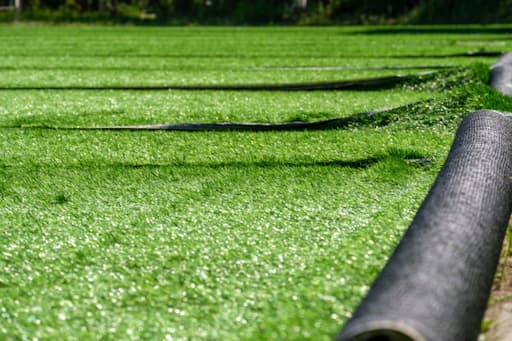
Pros:
- The one plus about synthetic turf installation is that it’s relatively easy to find a professional to assist with your project.
Cons:
- The initial install for synthetic turf has many small details and requires a good deal of planning.
- Professionals will need to create an initial base surface of flat, crushed stone or gravel to allow for proper drainage.
- A level surface is an essential step as any issues can create stagnant water or odors. Another important layer is a weed cloth to avoid growth.
- Besides, most installations require an infill layer to maintain the structure and hold the blades upright.
Next Steps
There’s a lot to take in when it comes to selecting a surface for your playground area. If you’re still considering your options, we invite you to look at some of our other playground surface pros and cons. If you’re ready to take the next steps with a poured-in-place rubber playground flooring or rubber tiles for playground flooring, contact us today for a free quote.
With so many different qualities and characteristics to consider, choosing a playground surface can be bewildering. That’s why we’ve created an ultimate guide of all the pros and cons of 11 of the most popular playground surfaces, from wood chips to recycled rubber mulch.
FAQs About Artificial Grass for Playgrounds
Anywhere from $6-$20/sq ft for the product itself, plus installation costs. See more pricing details here.
There’s a variety of both pros and cons when it comes to synthetic playground grass. For example, some types of artificial turf may not absorb falls from as high as poured-in-place playground surfacing.
The brand AstroTurf® might come to mind. There’s a variety of fake grass for playgrounds, from carpet-like to surfacing that looks like actual grass. Should I use it for my playground? Learn more here.
While no certified manufacturer guarantees artificial grass to last more than eight years. However, it usually endures about 10-15 years, meaning you’ll have to replace it sooner rather than later. And with all that, there’s various maintenance that needs to be done during the time, such as refilling the loose rubber granules in the grass and frequent cleaning.
